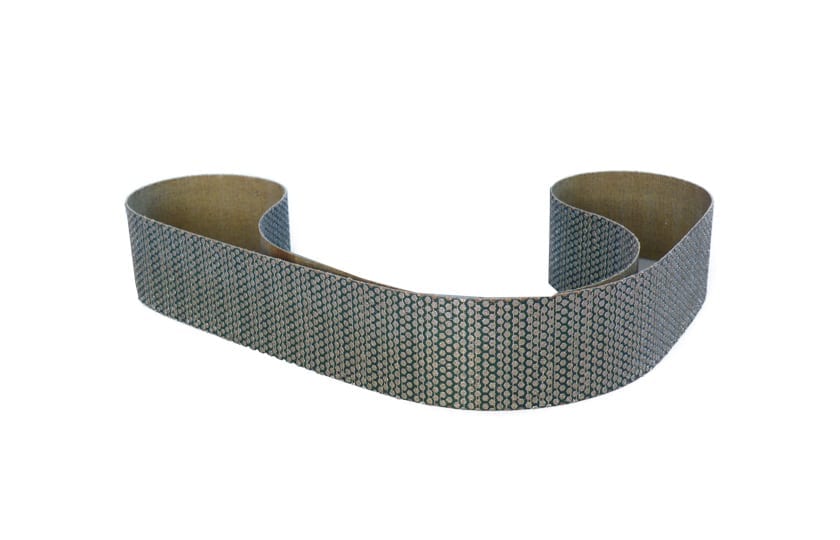The diamond grinding belts are particularly suitable for processing hardened steels (>55 HRC) and titanium alloys.
Due to the hardness of the diamond abrasive grain, the diamond grinding belts achieve excellent results when processing brittle, hard materials, glass, ceramics, tungsten carbide, chromium oxide and natural stone.
- Very long service life
The combination of the innovative grain and belt connection technology as well as the very low grain wear ensures a very long service life of the diamond grinding belts.
- Bearbeitung sehr harter Werkstoffe
The extremely hardness of the diamond crystals means that very hard materials can be processed. The wear and corrosion resistance of the diamond crystals is a guarantee for machining.
- Constant surface quality
The continuous grinding performance with an extremely long service life ensures constant surface quality. In addition, the very cool grinding prevents thermal surface damage to the workpiece being machined.
- Suitability for dry and wet grinding
The diamond grinding belts are suitable for both dry grinding and wet grinding.
Diamond grinding belts have a specially patented carrier material. It is a carrier material made of aramid fibers. Aramid fibers (also known under the brand name Kevlar) are characterized by very high strength, very high elongation at break and high vibration damping properties. The carrier material is covered with a form-fitting copper layer. Using a nickel-based alloy, the diamond crystals are galvanically bonded to the grinding belt in island or full coverage (see pictures).
The designation of the diamond grain size differs from the grain size according to FEPA. To better assign and select the correct grain size for the diamond grinding belts, a grain size comparison is shown below.
- Diamond: Glass, ceramic, tungsten carbide, chromium oxide, natural stone
- Recommended grinding operations: Grinding of surfaces, edges and cylindrical workpieces
- Workpiece types: Rollers, (paper) cylinders, glass edges, marble and granite slabs, ceramic-coated parts
- Handling:Robotic, automatic and manual grinding

